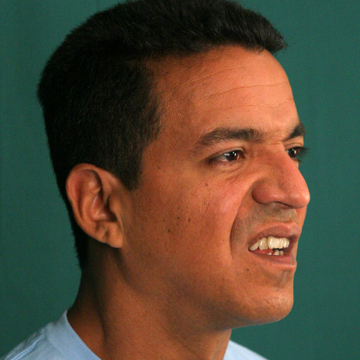The importance of nonverbal communication (NVC) and nonverbal behavior (NVB) are indisputable and there’s a vast amount of information that we can glean about individuals from them. But while all channels of nonverbal behavior are important, the most important is the face, and for good reason: the face is the most complex nonverbal signal system in the body, and it is used to express many different kinds of mental states.
Thus, no wonder we have face to face interactions, not elbow to elbow or butt to butt.
There’s good reasons why we look at each other’s faces when we interact: the face is the primary center of all that information above. And we are continuously processing that information when we interact with others.
What’s so Special about Facial Expressions?
 Of all these signals, facial expressions of emotion are very, very special, because emotions are special types of psychological phenomena. As we’ve been discussing in our past few blogs, emotions are reactions to events that are meaningful for us. They are triggered by an information processing system in our minds that appraise or evaluate events that happen around us, and inside us. When triggered, emotions recruit an organized system of reactions that produce specific physiological signatures, direct our cognitions, and produce specific types of feelings.
Of all these signals, facial expressions of emotion are very, very special, because emotions are special types of psychological phenomena. As we’ve been discussing in our past few blogs, emotions are reactions to events that are meaningful for us. They are triggered by an information processing system in our minds that appraise or evaluate events that happen around us, and inside us. When triggered, emotions recruit an organized system of reactions that produce specific physiological signatures, direct our cognitions, and produce specific types of feelings.
Importantly, emotions produce specific, nonverbal behavior in the face, voice, and body, and different emotions are expressed by different, specific, unique facial configurations that are universal to all cultures, regardless of race, nationality, ethnicity, religion, gender or any other demographic variable.
Benefits of Reading Facial Expressions of Emotion
- Facial expressions of emotion are probably the most important signal of the face because they tell us about people’s personalities, emotions, motivations, or intent.
- They are not only signs of people’s internal states; they are also signals to others to act in certain ways, providing messages for social coordination.
- They are also important signals of socialization and enculturation.
 Facial expressions are also special because they can signal different, discrete emotions (otherwise known as the seven basic emotions or seven universal emotions) – anger, contempt, disgust, fear, happiness, sadness, and surprise.
Facial expressions are also special because they can signal different, discrete emotions (otherwise known as the seven basic emotions or seven universal emotions) – anger, contempt, disgust, fear, happiness, sadness, and surprise.
As we’ve discussed previously, different emotions are associated with different antecedent and appraisal processes, and turn on different cognitive and physiological reactions in order to prime the body for action. Each discrete emotion signaled by facial expressions has a specific function, such as to remove obstacles, eliminate contaminants, or reduce harm.
A Window to a Person’s Mental States and Processes
When we read facial expressions of emotion, we don’t just read how others are feeling. Because of the characteristics of emotion described above and discussed in our previous blogs, facial expressions of emotion are windows to a person’s mental states and processes.
When we read someone’s facial expressions of emotion, we know
- How their mind is processing something (antecedents and appraisals)
- What their thoughts are turned toward (cognitive gating)
- What their bodies are primed to do in terms of action (functions of emotion; physiological signatures)

For example, if we read anger, we know that a person’s mind if processing goal obstruction, that blood is rushing disproportionately to their arms to prepare them to fight, and that their cognitions are gating to be aware of threat signals in others. If we read disgust, we know that a person’s mind is processing contamination, and their cognitions are gating towards eliminating contaminated objects. If we read fear, we know that their minds are processing threat, blood is rushing to their legs, and they are primed to flee or freeze.
The Science
 Thus, reading each of the universal facial expressions of emotion is so important because when we read faces, we are actually reading the mind processing and evaluating stimuli. And when we see a specific, discrete emotion, we know how they evaluated something. We know the direction of what people are thinking, and equally important, we know what their bodies are primed to do doing before they do. Think about how important this is for people in harm’s way.
Thus, reading each of the universal facial expressions of emotion is so important because when we read faces, we are actually reading the mind processing and evaluating stimuli. And when we see a specific, discrete emotion, we know how they evaluated something. We know the direction of what people are thinking, and equally important, we know what their bodies are primed to do doing before they do. Think about how important this is for people in harm’s way.
All this information that we can read from facial expressions of emotion allow us to get insights into the minds of the people with whom we interact, even when they are not talking. They allow us to draw reasonable inferences and testable hypotheses about people’s personalities, motivations, and intentions, which are incredibly important for many professionals.
When we observe facial expressions of emotion when people are talking, those emotional expressions give us important cues about how we should interpret the content of the words spoken. As with all nonverbal behavior, facial expressions of emotion can supplement, complement, qualify, or contradict spoken words, all of which are important moderators of how much as should infer from words alone.
Added Benefits of Reading Facial Expressions
 There are additional benefits to being interested in reading facial expressions of emotion, too. Doing so shows interest in others by paying attention.
There are additional benefits to being interested in reading facial expressions of emotion, too. Doing so shows interest in others by paying attention.
Ever observe or experience an interaction when people appear not to be interested in you or what you’re saying? And, catching emotion signals of others is a conversation starter or multiplier. It can be the basis for further discussion, including understanding others on an emotional level. Reading facial expressions of emotion is the basis for empathy. And because they’re universal, facial expressions of emotion are the closest thing we have to a universal language.
When we really think about it, we know why reading facial expressions of emotion is so, so important. These are the benefits of reading facial expressions, which you cannot get from reading any other channel of nonverbal behavior. That doesn’t mean that reading other channels is not important. But it does mean facial expressions of emotion are special, and the reason why we focus on it in our research and training.
For those of you have learned the basics of reading facial expressions of emotion with one of our online courses, challenge yourself to become even more skilled in reading them with other, more advanced courses.
For those of you have haven’t yet experienced learning to read facial expressions of emotion with one of our introductory courses, give it a shot! Now’s the time, for all the reasons above.
If you learn to read facial expressions of emotion and incorporate that skill into your professional practices, interviews, negotiations, sales, and the like, it will be a force multiplier like you’ve never witnessed.
The post Benefits of Reading Facial Expressions of Emotion first appeared on Humintell.



 Brainy Things
Brainy Things Emotions give our lives meaning, and life without emotions is impossible to imagine. The joy we feel when we accomplish a tough goal, the pleasure of the touch of a loved one, and the fun we have with our friends on a night out all color our lives in profound ways.
Emotions give our lives meaning, and life without emotions is impossible to imagine. The joy we feel when we accomplish a tough goal, the pleasure of the touch of a loved one, and the fun we have with our friends on a night out all color our lives in profound ways. What are some examples of things that trigger emotions? Getting stuck in traffic? Being hungry? Watching the news? How your partner squeezes the tube of toothpaste (yes, this is one of my pet peeves!)?
What are some examples of things that trigger emotions? Getting stuck in traffic? Being hungry? Watching the news? How your partner squeezes the tube of toothpaste (yes, this is one of my pet peeves!)?
 In that last blog
In that last blog Contempt – Moral Superiority
Contempt – Moral Superiority Disgust – Contamination
Disgust – Contamination Fear – Threat
Fear – Threat Happiness – Goal Attainment
Happiness – Goal Attainment Sadness – Loss
Sadness – Loss Surprise – Novel Objects
Surprise – Novel Objects